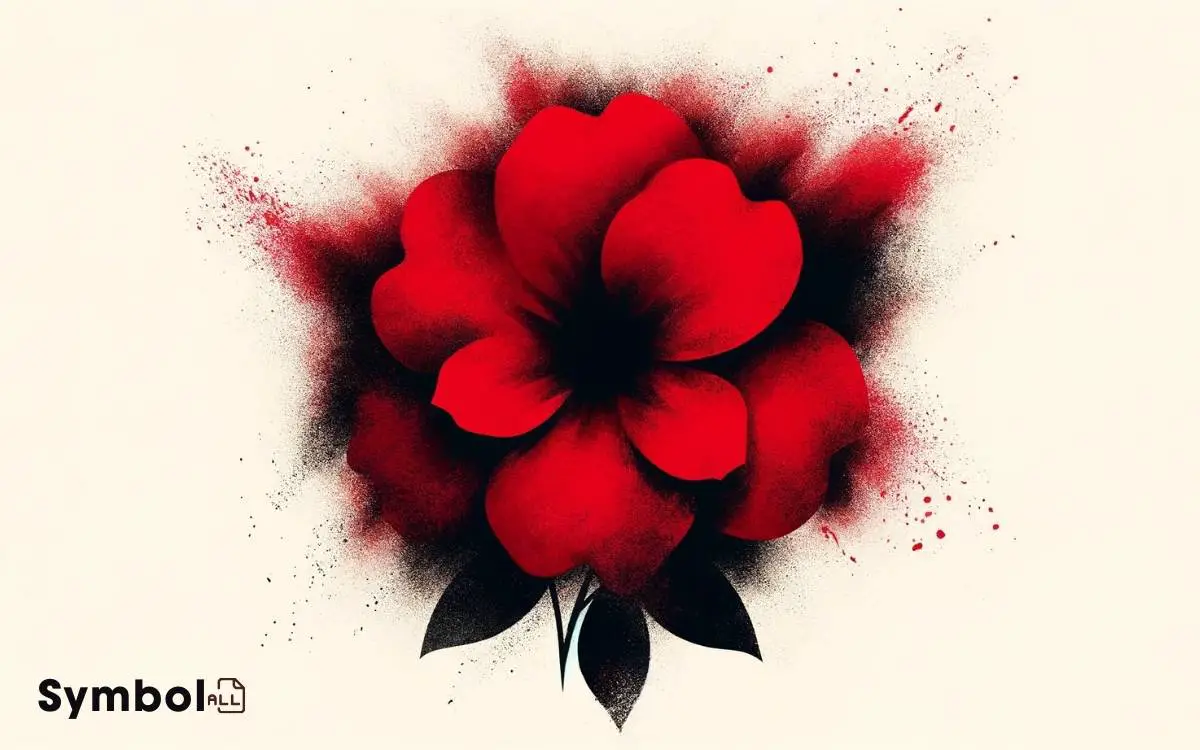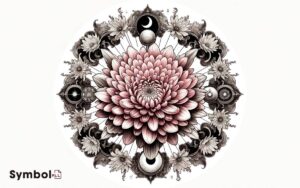Red Flower That Symbolizes Death: The Red Poppy!
You’re looking for a red flower that symbolizes death, and the red poppy is the remarkable answer. Originating from European battlefields during World War I, it flourished amidst chaos, embodying life and death.
Across cultures, it signifies transient life, eternal sleep, and sacrifice, reflecting a deep historical and emotional context. In commemorations, it’s a poignant emblem of mourning and respect for fallen servicemen and women.
Its symbolism in art challenges viewers to confront mortality, weaving themes of loss and memory. Nurturing this flower connects you to its rich tapestry of meanings, hinting at a deeper understanding of life’s fleeting nature.

Key Takeaways
The Red Poppys Origins
The origins of the red poppy‘s association with death trace back to its ubiquitous presence on European battlefields during World War I. It flourished in the disturbed soil of the trenches and no man’s land.
This phenomenon, coupled with its stark color contrast against the war-torn landscapes, rendered it a poignant symbol of life and death intertwined.
You’ll find it intriguing that botanically, Papaver rhoeas thrives in conditions of upheaval, which metaphorically paralleled the chaos and destruction of war. Its resilience and ability to proliferate in such environments underscore its symbolism.
Researchers have noted that the poppy’s vivid red, often likened to blood, visually encapsulates the loss and sacrifice inherent in conflict, thereby cementing its association with remembrance and mourning.
Symbolism Across Cultures
Delving into diverse cultures, you’ll discover that the symbolism of the red flower varies greatly, serving as a multifaceted emblem of death, rebirth, and memory across different societies.
This rich symbolism is not only tied to the flower’s vivid hue but also its presence in various cultural ceremonies and legends.
Below is a table that contrasts the symbolism of the red flower in different cultural contexts:
| Culture | Symbolism |
|---|---|
| Japanese | A transient life and mortality |
| Ancient Greek | Eternal sleep, renewal, or revival |
| Chinese | Sacrifice, love, and death in folklore |
| European Middle Ages | Sacrifice and the remembrance of the dead |
Each culture’s interpretation adds layers of meaning to the red flower, illustrating its universal yet culturally specific significance.
War and Remembrance
In analyzing the role of red flowers in the context of war and remembrance, one finds that these symbols often encapsulate the profound grief and valor associated with soldiers’ sacrifices across cultures.
You’ll observe that the red flower, especially the poppy, has become a poignant emblem of both mourning and respect for fallen servicemen and women.
This transformation is underpinned by a complex interplay of historical events, literary references, and societal rituals that collectively imbue the red flower with a deep sense of collective memory and honor.
As you explore further, it becomes apparent that these floral symbols serve not only as a personal token of remembrance but also as a universal signifier of the price of freedom, reminding us of the fragility of peace and the enduring spirit of humanity in the face of conflict.
Artistic Representations
Exploring the rich tapestry of red flowers in war and remembrance naturally leads us to their vivid portrayal in various forms of art.
Artists have long been fascinated by the symbolism of red flowers, particularly in their ability to convey deep emotional resonance and contemplation of mortality.
You’ll find that paintings, sculptures, and installations often utilize these motifs to evoke a sense of loss, memory, and reverence.
Analyzing these artistic representations, you’re invited to ponder how color, form, and context collaborate to create a powerful narrative around death and remembrance.
Through these works, artists challenge viewers to confront the complexities of grief and the beauty found within it, encouraging a profound engagement with the themes of life, death, and memory.
Gardening and Care
Shifting from artistic symbolism to practical cultivation, you’ll find that nurturing red flowers, emblematic of death, demands nuanced understanding and meticulous care.
These blooms, rich in meaning, require specific conditions to flourish, encapsulating the delicate balance between life and commemorating the departed.
| Factor | Requirement | Significance |
|---|---|---|
| Soil Type | Well-draining | Prevents root rot |
| Sunlight | Full to partial | Guarantees growth |
| Watering | Consistent, not soggy | Maintains health |
| Fertilizer | Balanced | Promotes blooms |
| Temperature | Moderate | Mimics native habitat |
Adhering to these guidelines fosters a thriving garden, where the red flowers serve as a poignant reminder of life’s fleeting nature. This careful attention not only honors those we’ve lost but also brings beauty and reflection to our surroundings.
Global Commemorations
Red flowers’ symbolism extends beyond their visual appeal, marking their presence in global commemorations of death with deep cultural resonance and varied interpretations.
The emblematic use of red flowers in these contexts isn’t arbitrary but rooted in a profound symbolism that bridges the gap between the living and the deceased.
Here’s how they feature in global commemorations:
- Memorial Day in the United States: Red poppies are worn to honor fallen soldiers, symbolizing the blood shed in battle.
- Anzac Day in Australia and New Zealand: Red poppies commemorate military personnel who died in wars, conflicts, and peacekeeping operations.
- Dia de los Muertos in Mexico: Red flowers, particularly marigolds, guide spirits to the altars set up for them.
- Remembrance Day in various Commonwealth countries: Red poppies represent remembrance and hope for a peaceful future.
These commemorations reveal the profound layers of meaning red flowers carry, transcending cultural boundaries to universally symbolize sacrifice, loss, and remembrance.
Myths and Legends
Delving into ancient myths and legends reveals that red flowers often symbolize not just death, but also rebirth and the eternal cycle of life, offering a nuanced understanding of their role across various cultures.
You’ll find that in many traditions, these blooms aren’t merely harbingers of end times but signify a profound transformation. For instance, in Greek mythology, the red anemone emerged from the blood of Adonis, symbolizing both the tragedy of his death and the hope of renewal.
Similarly, Eastern traditions often associate red flowers with the life force, acknowledging their dual role in commemorating the departed and celebrating life’s vibrancy.
This duality underscores a universal truth recognized across cultures: endings are invariably linked to new beginnings, and death is but a passage to another form of existence.
Modern Day Significance
In contemporary times, the symbolism of red flowers has evolved, reflecting complex societal attitudes towards death and rebirth. You’ll find that these blooms now embody a nuanced tapestry of meanings, often mingling the traditional with the modern.
Consider the following:
- Memorialization: Red flowers serve as poignant reminders of lives lost, often used in funerals and remembrance events to honor the deceased.
- Cultural Resonance: Different cultures ascribe varied significance to red flowers, from symbols of love to markers of respect for the dead.
- Artistic Representation: Artists frequently employ red flowers to denote mortality, love, and the fleeting nature of existence, enriching narratives with layered symbolism.
- Personal Reflections: For many, these flowers prompt introspection on life’s impermanence, encouraging a deeper appreciation for moments of beauty and connection.
These dimensions illustrate the red flower’s enduring relevance in contemporary discourse on death and rebirth.
Conclusion
As you’ve journeyed through the multifaceted world of the red poppy, you’ve uncovered its deep roots in symbolism and remembrance. Like the Phoenix rising from ashes, the red poppy stands as a proof to resilience and renewal amid devastation.
Its presence in art, gardens, and global commemorations weaves a rich tapestry of memory and hope, embodying myths and legends of yore. Today, its significance blooms ever more poignant, reminding us of the fragile line between life and death, war and peace.






